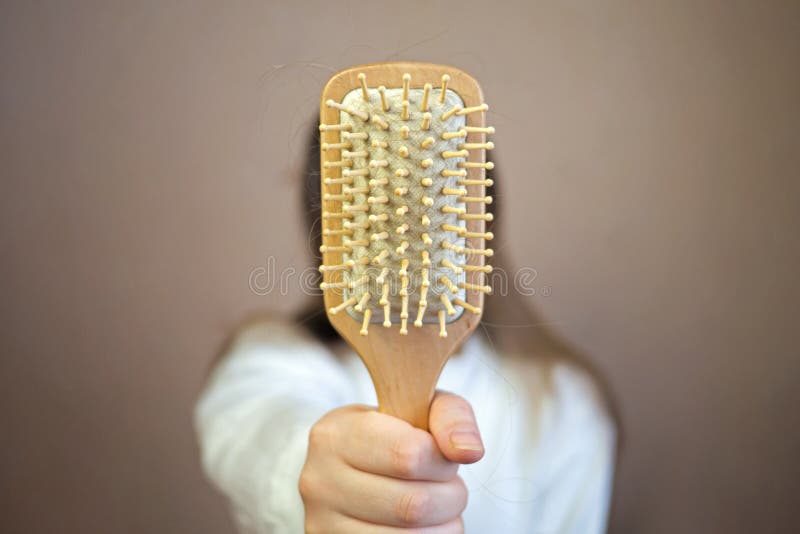Table Of Content

It typically happens a few months after your body goes through something physically or emotionally stressful. Hair loss due to telogen effluvium is usually temporary. Your hair often grows back without treatment once you no longer have stress. Spironolactone is a drug used to treat acne that may be effective for menopausal hair loss. While it doesn't appear to help regrow hair, research shows it can prevent further hair loss and improve the quality and thickness of hair for about 40% of people with female pattern baldness.
What are the signs of hair loss in women?

Female pattern baldness is a type of hair loss that affects women and people assigned female at birth (AFAB). It causes you to lose hair on the skin covering your head (scalp). The type and severity of hair loss you experience may determine the outcome (prognosis). Some types of hair loss are permanent, especially if you have damage to your hair follicles.
Clinical trials
However, some individuals will experience further hair loss. Incorporating gentle, hydrating products into your hair care routine can also help strengthen your strands and improve texture. Excessive hair shedding can become long-term if you continue to experience high levels of stress for an extended period. Telogen effluvium occurs when large numbers of hair follicles push into the resting phase. In the most common type of permanent hair loss, only the top of the head is affected. Hair transplant, or restoration surgery, can make the most of the hair you have left.
How is hair loss treated?
It's typical to lose some hair every day as part of your hair’s usual growth cycle. For most people, the lost hair grows back, and you maintain a full head of hair. But illness, hormonal changes, stress, aging and inherited conditions can interfere with your hair’s growth cycle. More hair falls out, but new strands don’t always grow back. Sometimes hair loss is a sign of a condition called hyperandrogenism, which happens when your body makes too many androgens (male hormones).

What is the prognosis (outlook) for people with hair loss?
However, it's best to talk with your healthcare provider first before using it yourself. In one study, however, 120 healthy women had thicker hair and less hair loss after taking specific omega-3 fatty acids, omega-6 fatty acids, and antioxidants. If these results can be repeated in other studies, we’ll have some evidence to recommend taking these supplements. If your dermatologist prescribes one of these medications, you’ll need to take it for 6 to 12 months before you’ll know if it works for you. No hair growth within 12 months means the medication won’t work for you. To date, these medications have received FDA approval to treat other conditions, but not FPHL.
In addition to losing hair on the scalp, some people with alopecia areata lose hair from their eyebrows, eyelashes, or other parts of the body. Hair loss related to androgenic alopecia tends to happen gradually. While some people might experience hair loss as early as puberty, others might not notice symptoms until their middle ages.
Living with hair loss?
According to the American Academy of Dermatologists, it’s normal to lose anywhere from 50 to 100 strands of hair per day. For people with longer hair strands, losing them may be more noticeable. Since there are 100,000 hair follicles — or more — on each person’s scalp, the loss of 100 or so hair strands a day doesn’t make a big difference in appearance. Medications prescribed to manage symptoms of menopause do not typically cause hair loss, and may in fact help to prevent hair loss. However, medications that treat other conditions that are common in females over the age of 40 can contribute to hair loss.
Treatments for hair loss caused by inflamed follicles
Once this excessive hair shedding has gone on for a while, you may start to have visibly thinning patches in the top center of the scalp and near the hairline by your forehead. Thin patches can also appear on the back of the head, near the crown, or by the nape of your neck. Whether the newer treatments for hair loss, such as the lasers for at-home use, are safe for long-term use and can continue to stimulate new hair growth remain to be seen. If you think you have FPHL, it’s important to see a dermatologist for a diagnosis. Other common causes of hair loss in women can look a lot like FPHL. Without the right treatment, hair loss often continues.
21 Female Celebrities Who Opened Up About Hair Loss - SheKnows
21 Female Celebrities Who Opened Up About Hair Loss.
Posted: Fri, 09 Feb 2024 08:00:00 GMT [source]
Research shows topical Rogaine treatments can promote hair regrowth with female-pattern baldness, which can occur during menopause. The most common cause of hair loss in women is female-patterned baldness (androgenetic alopecia). OTC medications may help reduce hair loss and promote growth. Other types of hair loss may involve treating the underlying cause. It ranges from normal hair density to a bald crown, which is rare. The scale helps document female pattern baldness, a condition your doctor might call androgenic alopecia.
Without medications or treatment, hair loss due to female pattern baldness is permanent. Topical minoxidil is one of the best hair loss treatments for women, particularly those who have female pattern hair loss. It’s not yet clear how the magic happens, but researchers theorize that minoxidil reverses hair follicle shrinkage and lengthens the growth phase. This likely encourages hair to grow back fuller and speeds up the rate at which lost strands are replaced.
When you start to shed more strands — and fewer or none grow back — the condition is considered alopecia (hair loss). There are several types of hair loss, and it can affect adults of any gender and even children. You may lose hair just on your head or from your body as well.
Minoxidil tends to be more effective when used along with another treatment for hair loss. Many people see some regrowth when using minoxidil, but it takes time to see results, usually about 6 to 12 months. Talk to your healthcare provider if an abnormal amount of your hair is falling out. You may need to see a dermatologist (a doctor specializing in skin, hair, and nails) who can tell you whether you are experiencing hair shedding, hair loss, or both. Losing around 50–100 hairs daily through combing, brushing, washing, and styling is normal.

No comments:
Post a Comment